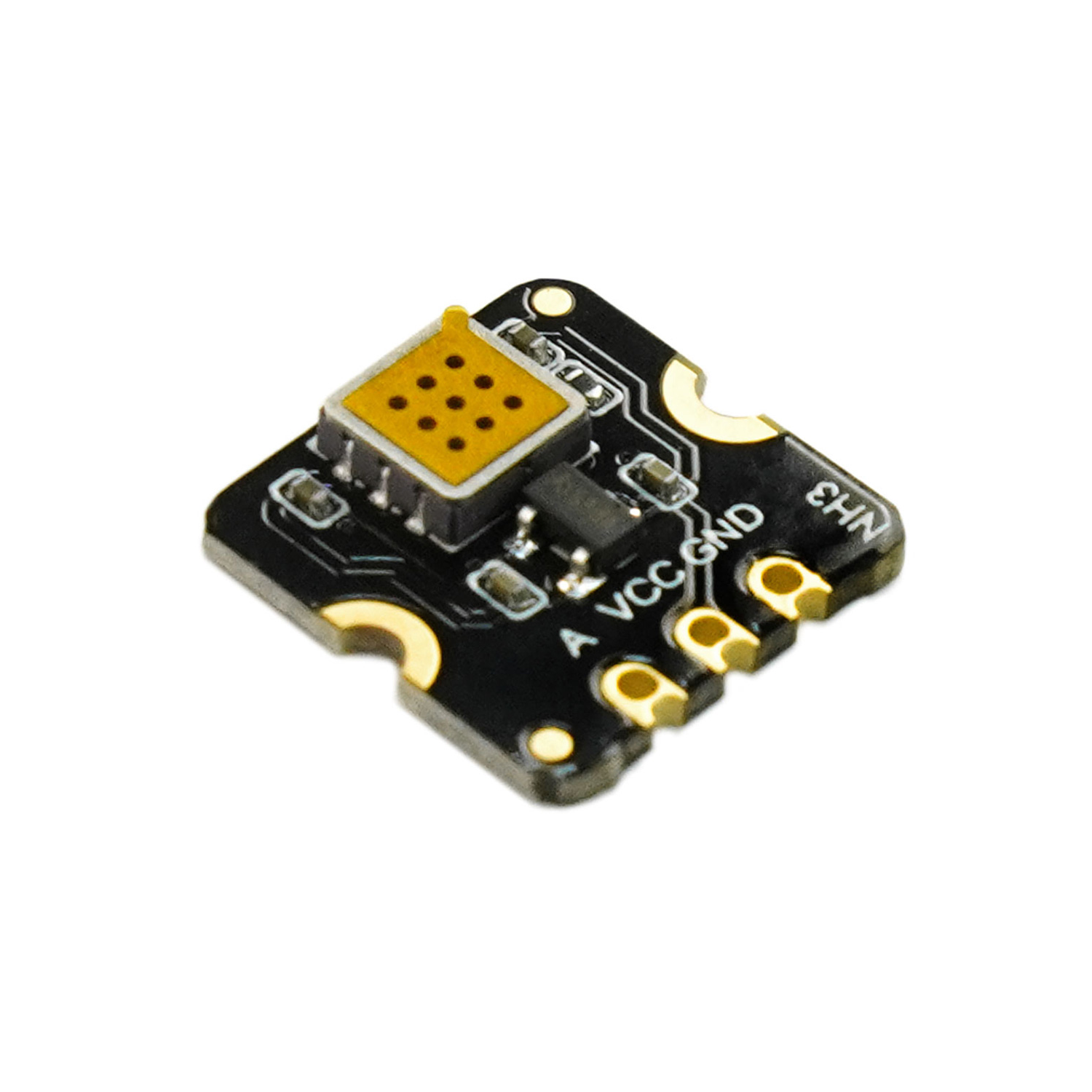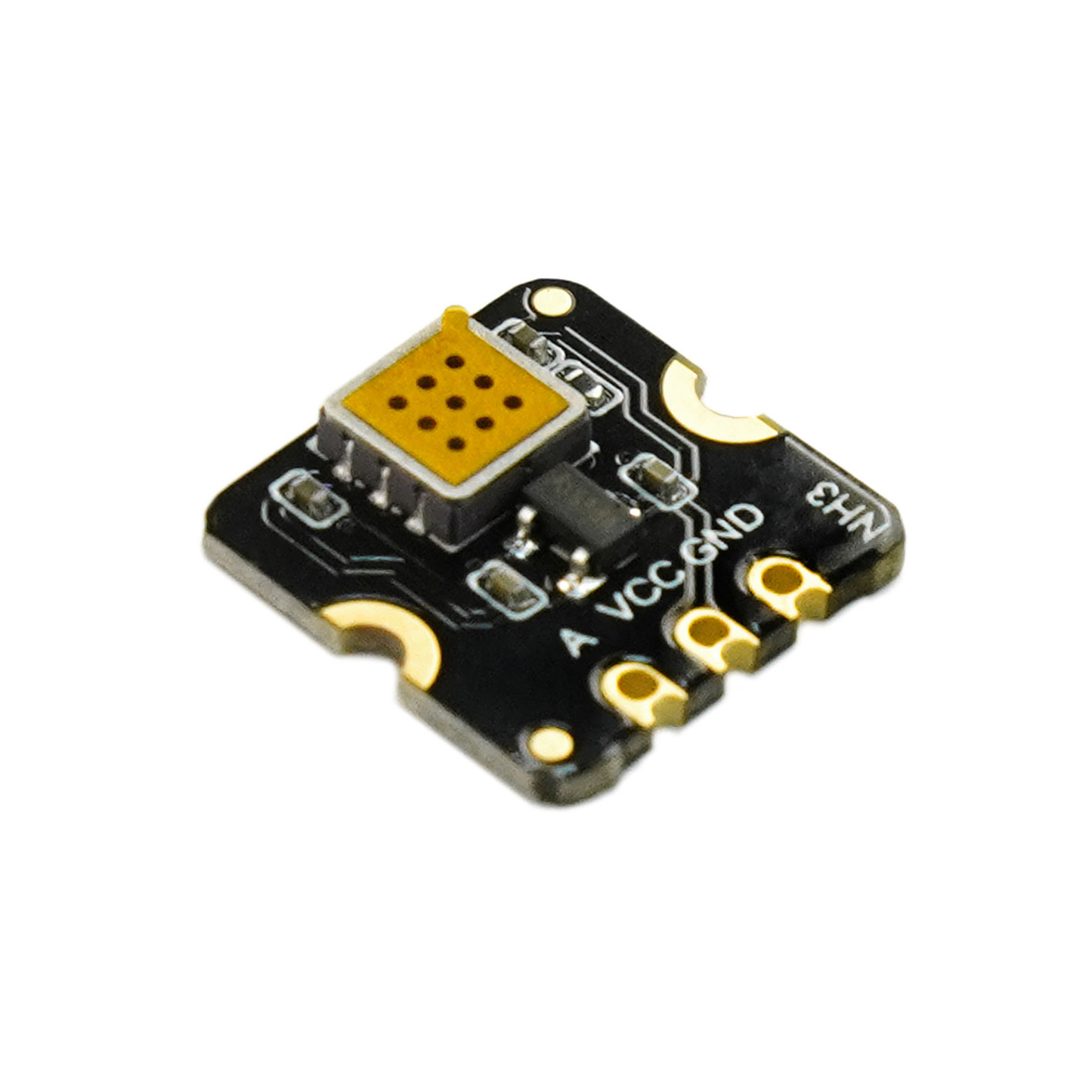
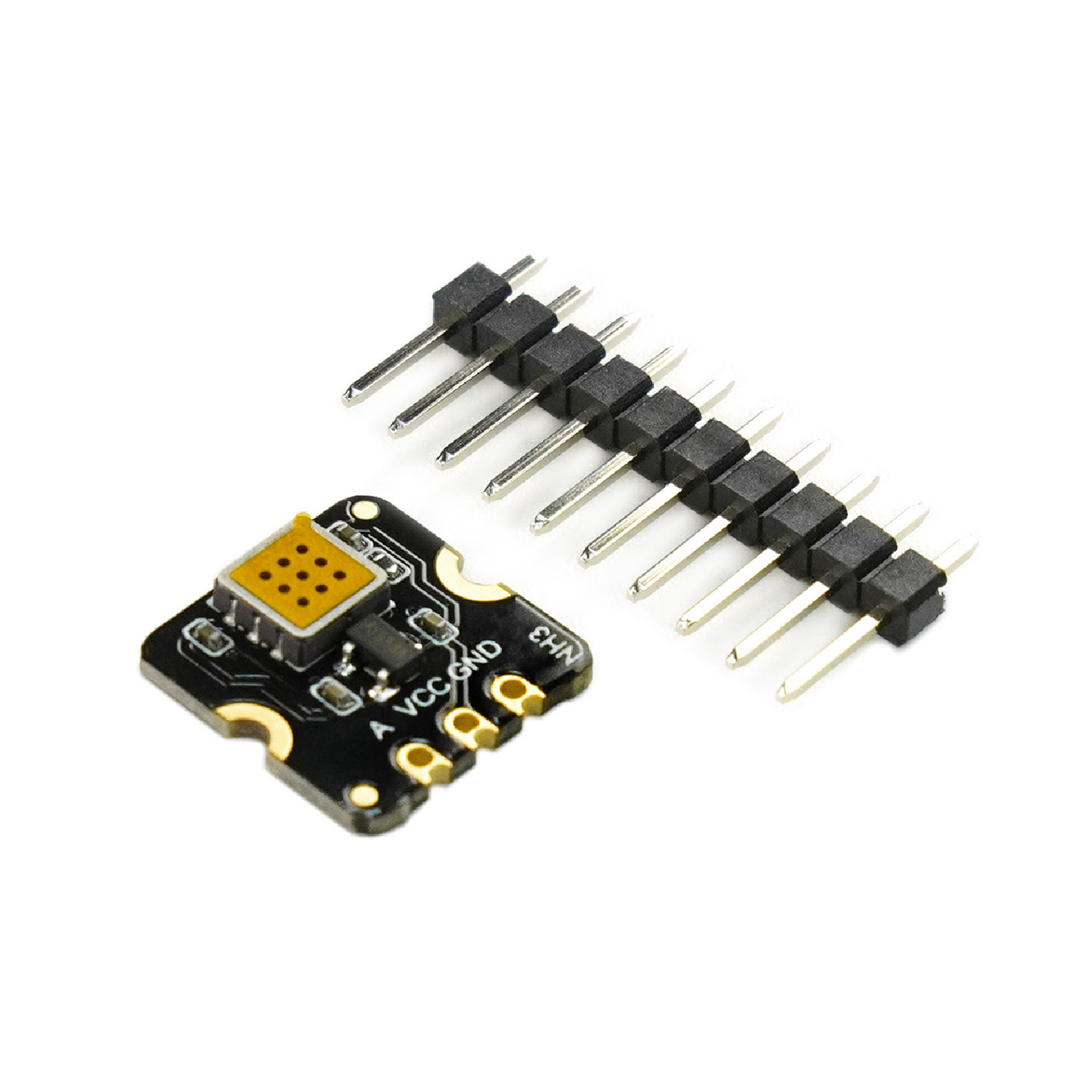
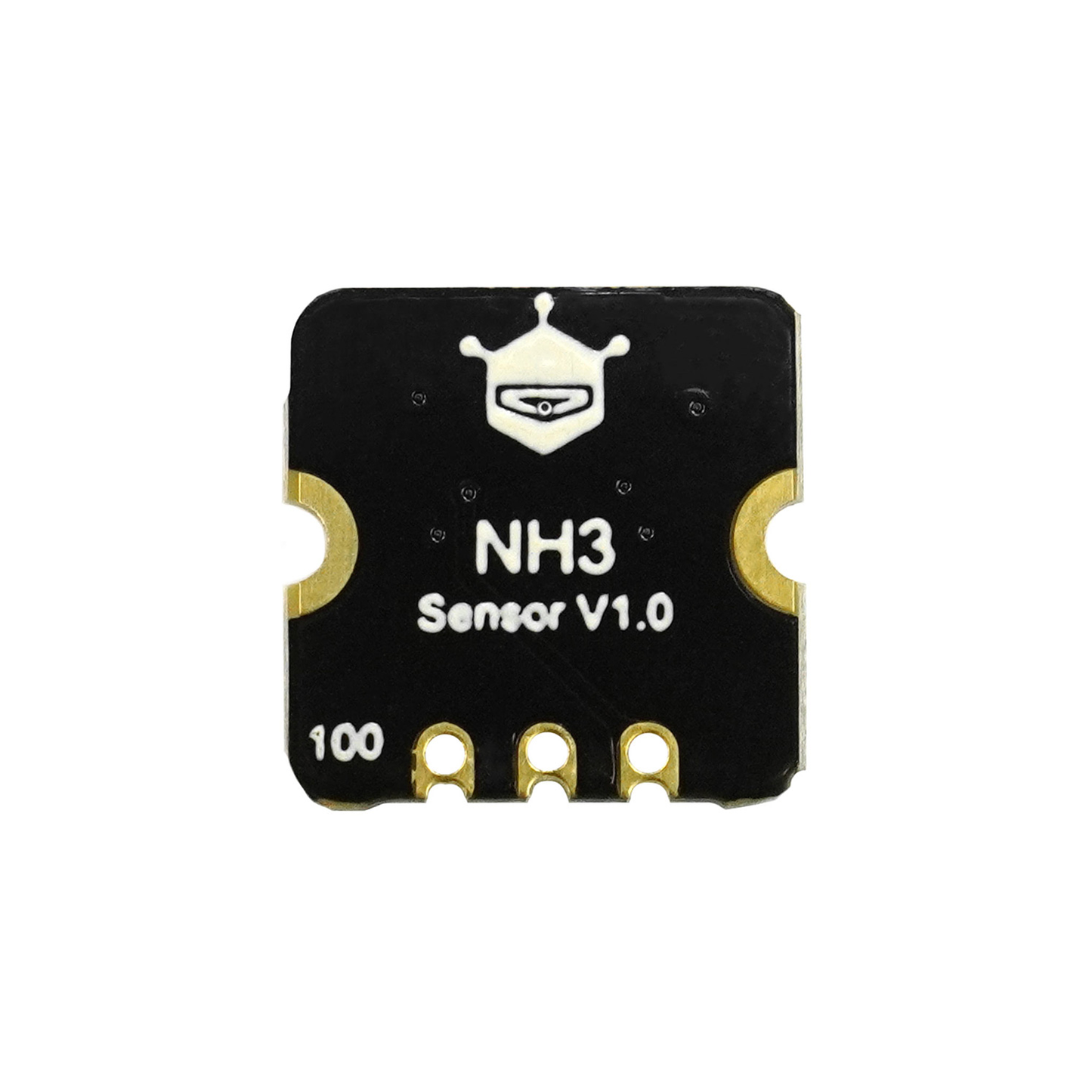
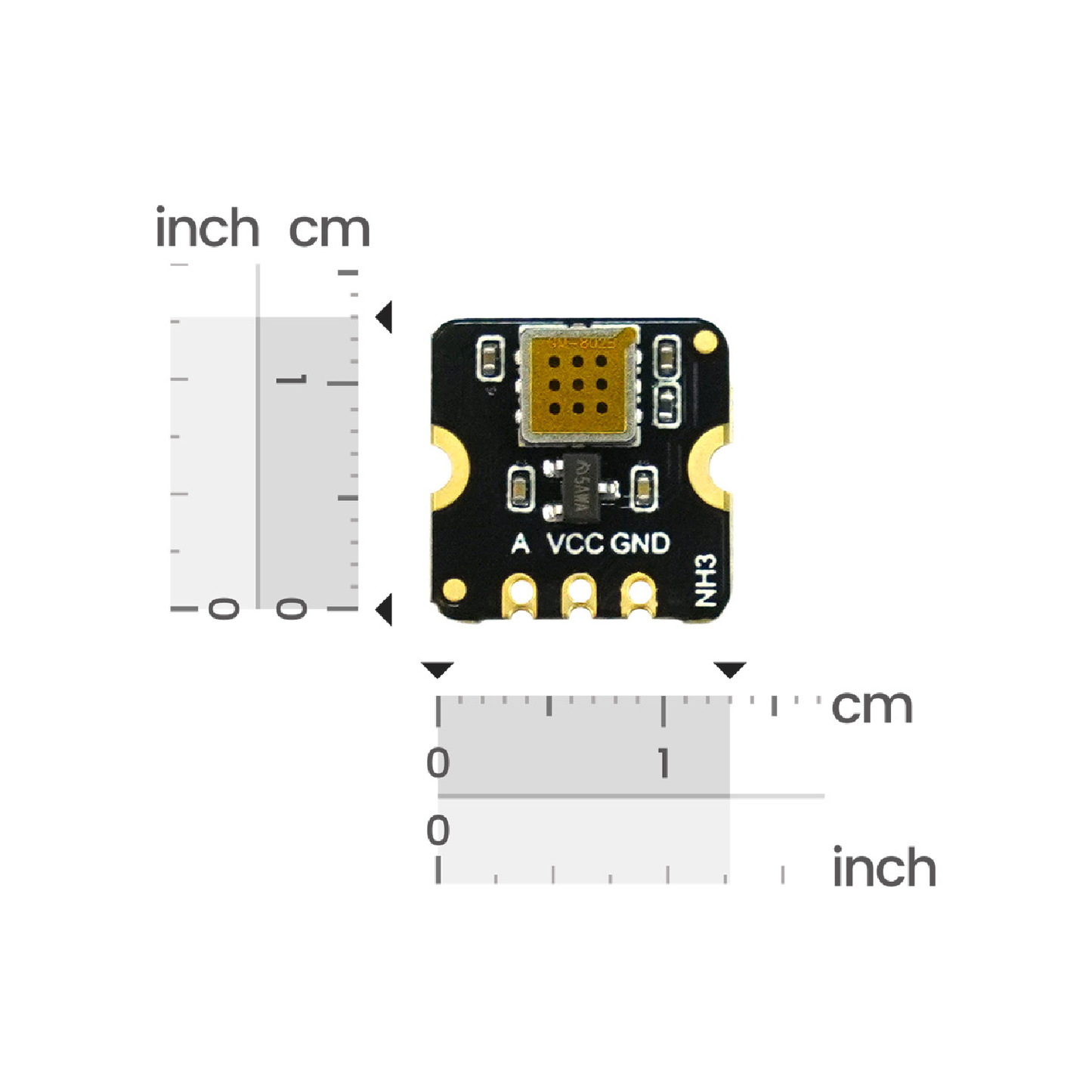
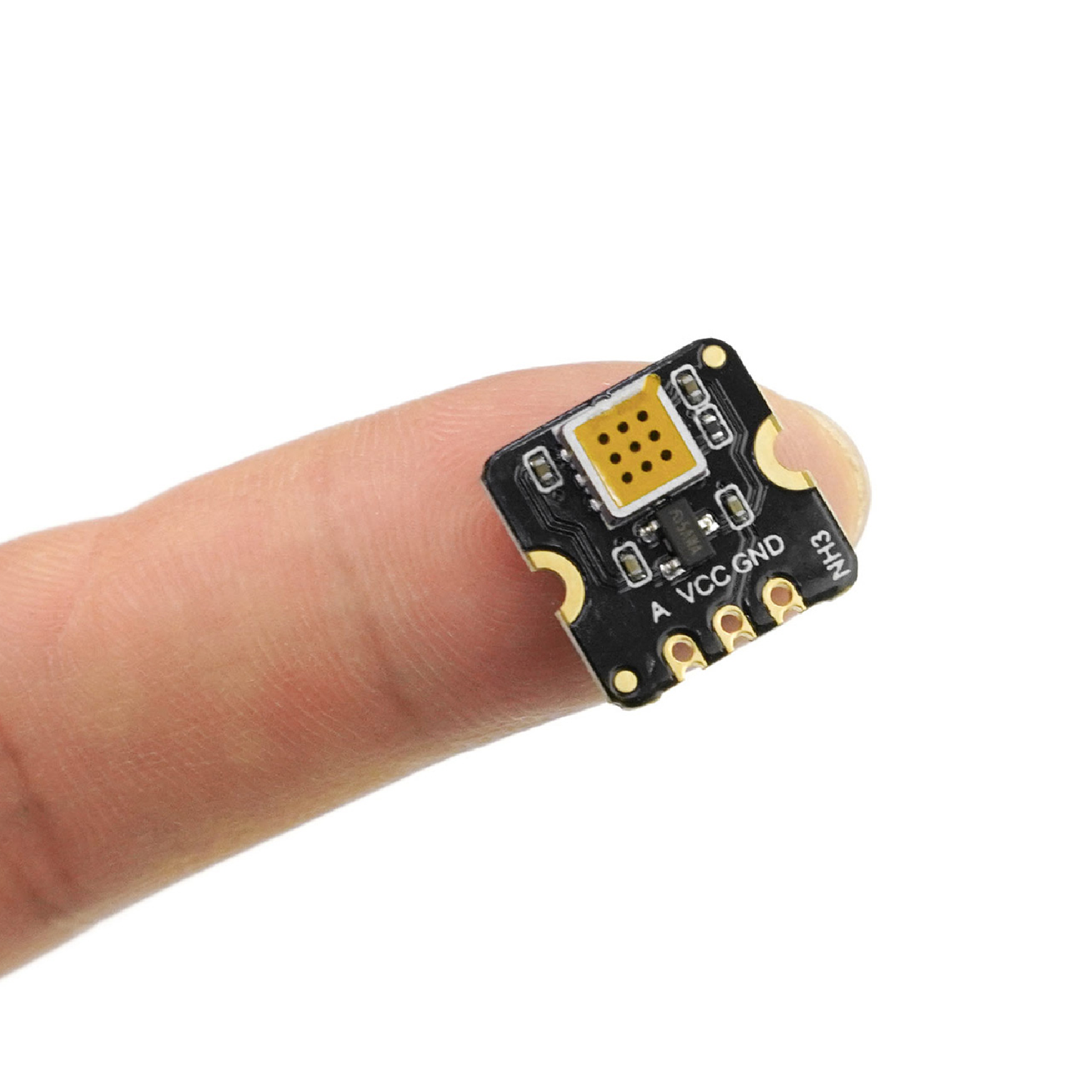
Description:
Fermion: MEMS Ammonia NH3 Gas Detection Sensor employs state-of-the-art micro-electromechanical system (MEMS) technology, endowing the sensor with compact dimensions (13x13x2.5mm), low power consumption (<20mA), minimal heat generation, short preheating time, and swift response recovery. The sensor can qualitatively measure ammonia concentration, which is suitable for ammonia leakage in cold storage, aquaculture risk control, toilet odor monitoring, and other application scenarios.
The MEMS series currently encompasses 11 different types of gas sensors (HCHO, CO, CH4, VOC, NH3, H2S, EtOH, Smoke, Odor, H2, and NO2), which can be combined as per specific requirements.
Note:
This sensor is capable of qualitative measurements only. For quantitative measurements, kindly consider purchasing the Gravity: NH3 Sensor (Calibrated).
Specifications:
- Gas detected: Ammonia (NH3)
- Detection range: 1-300ppm
- Operating voltage: 3.3-5V
- Operating current: <20mA
- Output signal: Analog voltage
- Sensitivity: R0(in air)/Rs(in 50ppm NH3) ≥ 3
- Operating temperature: -10-50℃
- Operating humidity: 15-90%RH (non-condensing)
- Lifespan: ≥5 years (in air)
- Dimension:13×13 x 2.5mm/0.0.51×0.51x0.1"
Features:
- Compact size, measuring only 13*13*2.5mm
- Low power consumption, operating current <20mA
- High sensitivity and rapid response recovery
- Advanced MEMS technology
Applications:
- Ammonia leakage in cold storage
- Aquaculture risk control
- Toilet odor monitoring
Precautions:
- Kindly remove the protective film before usage.
- To prevent exposure to volatile silicon compounds vapors (such as silicone adhesive, hair gel, silicone rubber, or other locations where volatile silicon compounds are present).
- Avoid exposure to high concentrations of corrosive gases (such as H2S, SOX, Cl2, HCl, etc.).
- Prevent contamination from alkalis, alkali metal salts, and halogens.
- Refrain from prolonged exposure to extreme environments (such as high temperatures, high humidity, and high pollution).
- Avoid contact with water, condensation, and freezing.
- Minimize excessive vibration, impact, and dropping.
- Please refrain from employing this module in systems that involve personal safety concerns.
- For extended periods of non-usage, it is advisable to preheat the module for at least 24 hours.
Projects:
- Project: Building an Electronic Nose with MEMS Gas Detection Sensor Breakout Series and Edge Impulse Platform
Introduction: In this project, I developed an electronic nose using DFRobot mems series gas sensors and the Edge Impulse platform, which is capable of identifying the scents of beverages and fruits.
Useful Links:
Package Included:
- 1 x Fermion: MEMS NH3 Sensor (breakout)
- 1 x 2.54mm pitch header pin


